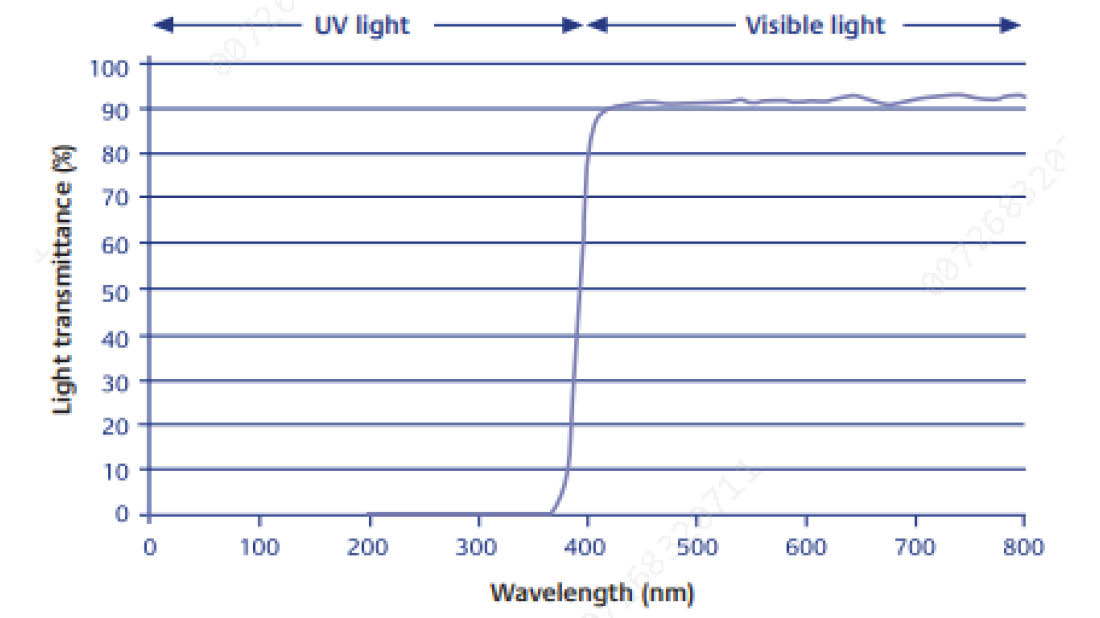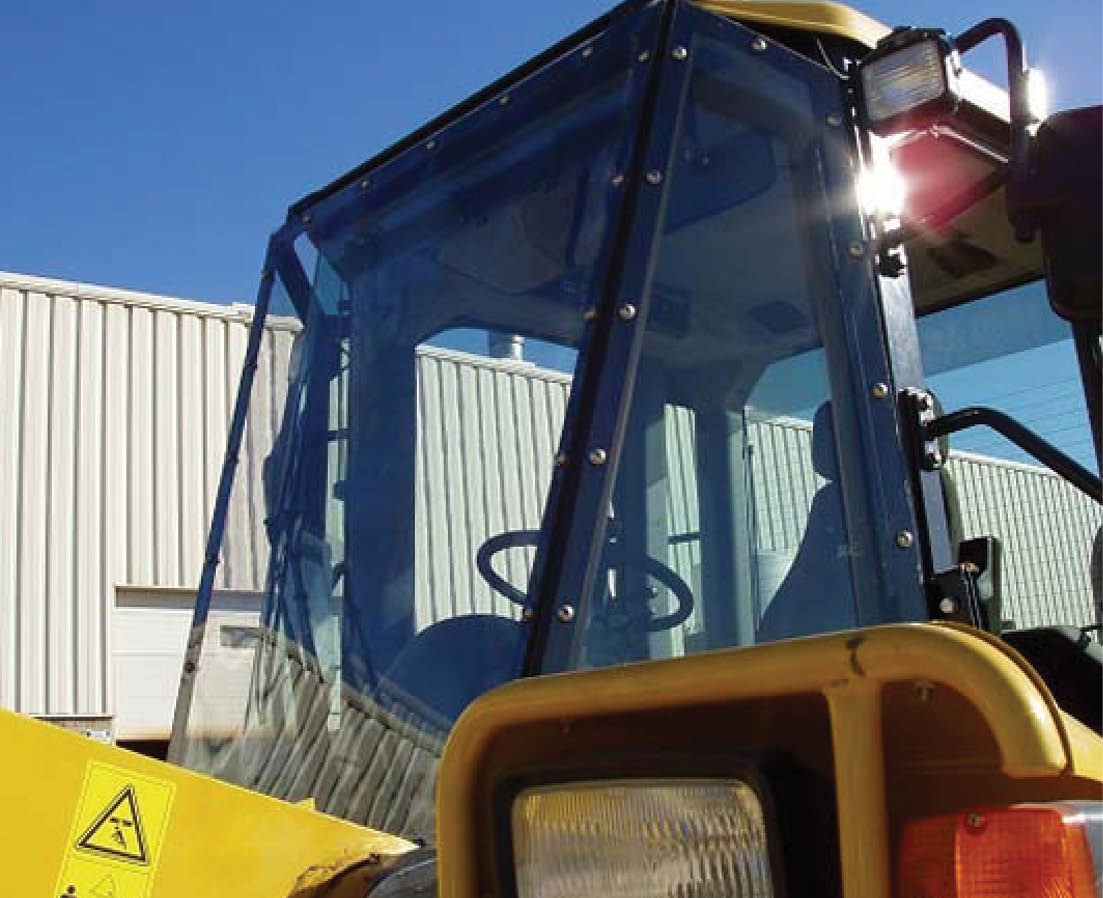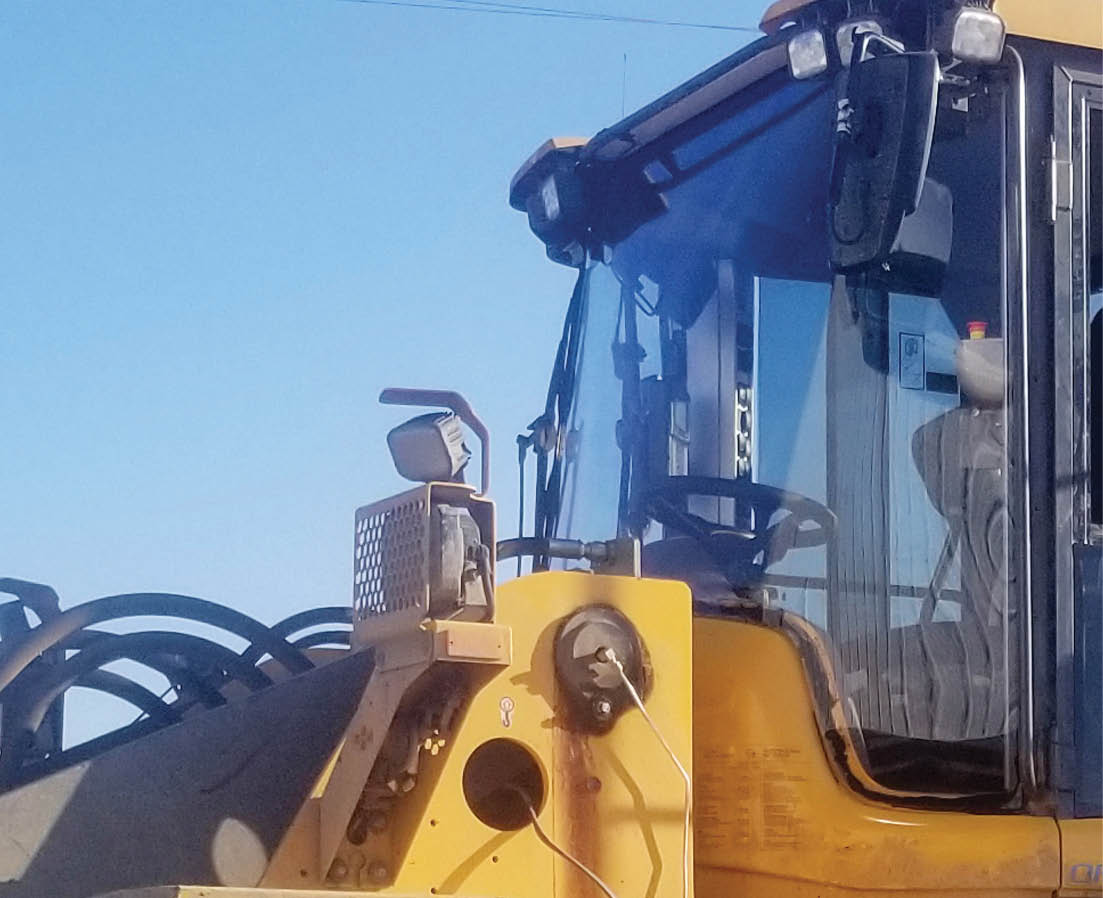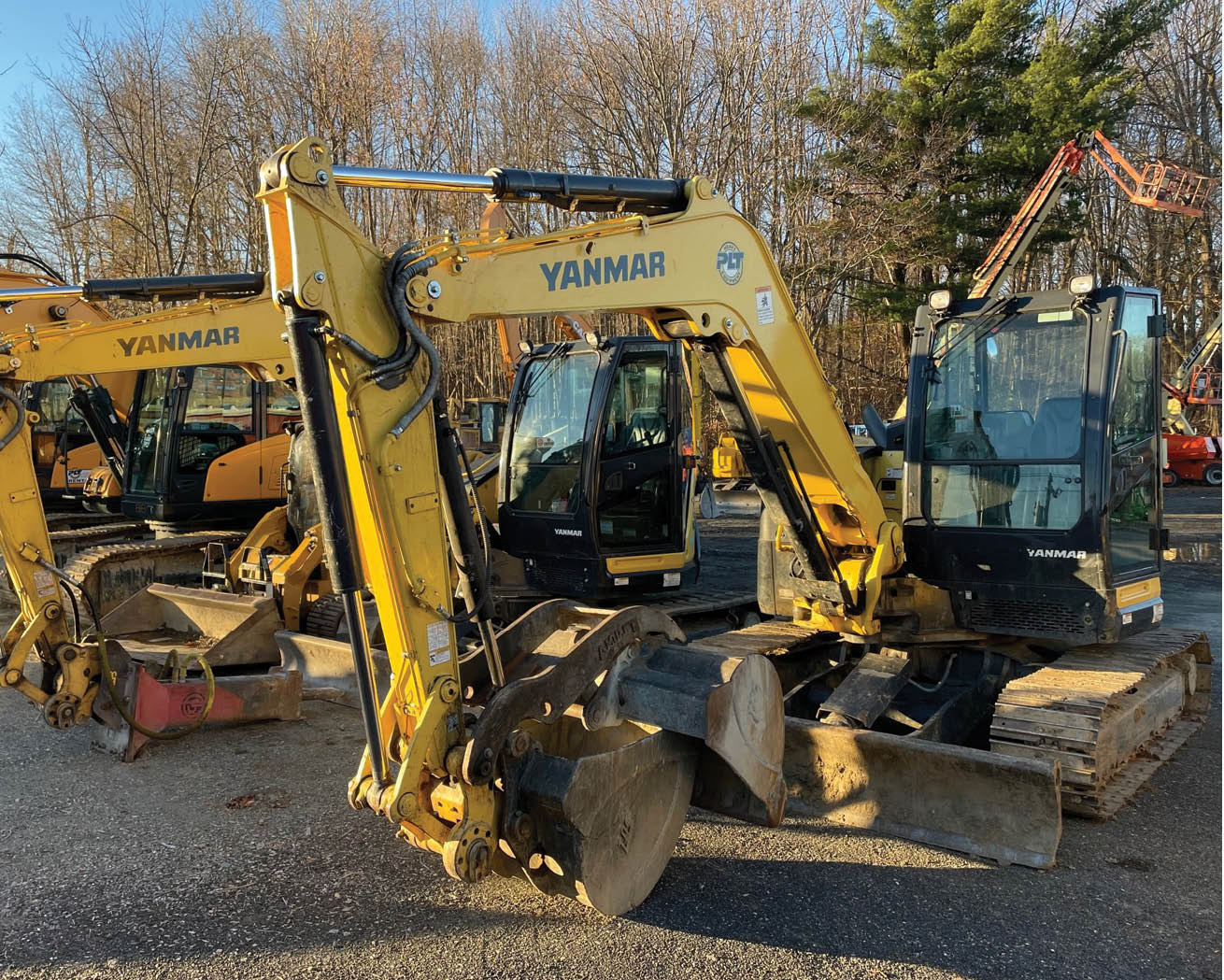SpecialFocus
eavy equipment machinery power has evolved from human or animal to fossil fuels and now electric. The advancements to mechanical power units increased the scale and productivity of equipment. Today, skilled operators can take advantage of advancements in attachment tools that allow equipment to be more flexible and accurate.
Enclosed cabs enhance safety and comfort while maintaining good visibility. The cab is an operator protective structure and is required to meet global or regional safety standards for: rollover protection (ROPS), operator protection (OPS) and falling object protection (FOPS). Industry specific glazing test standards contribute to the safety of the occupant while maintaining the structural integrity of the cab.
The precision and productivity required by modern forestry equipment resulted in engineering and design improvements to enhance operator safety in cab structures. Forestry cabs have replaced glass with highly impact resistant polycarbonate (PC) glazing to protect operators from debris or other projectiles while maintaining exceptional visibility. The regulations developed in the forestry industry evolved to include glazing material requirements that are applicable to construction, mining and other heavy equipment industries.
This article shows why PC glazing is the clear winner for safety.
Polycarbonate sheet is an excellent solution to stand up to the toughest glazing challenges. When comparing glazing material impact performance, there is a clear winner in PC.
Shattered tempered glass or lack of visibility from white-out in a damaged laminated window renders equipment inoperable and possibly miles from service in potentially extreme weather conditions.
Lumber cutting equipment users require even higher impact resistance glazing provided by all-polycarbonate laminated glazing meeting ballistic levels of protection.
In addition to impact performance, there are many other reasons to choose polycarbonate glazing over glass for heavy equipment windows, such as lightweight, UV protection, high optics, design freedom and abrasions resistance.
There are ergonomic considerations associated with lighter weight glazing — gauge for gauge, PC is half the weight of glass. This makes OEM installation or in-field replacement of windows a manageable task.

LEXAN sheets are almost opaque to all UV wavelengths below 385 nanometers (nm). UV-A wavelengths fall between 315 nm and 400 nm. UV-B wavelengths fall between 280 nm and 315 nm. Graph courtesy of SABIC.
The American Cancer Society (ACS) links most forms of skin cancer to exposure to ultraviolet (UV) rays, which mainly come from the sun. PC has both UV-A and UV-B blocking properties while providing a high level of light transmission whereas tempered glass does not block harmful UV-A radiation.
With operators spending many hours intensely focused looking through the cab windows, optics are important. Even though PC glazing has only been commercial since 1968, some manufacturers have perfected processes to improve quality levels in distortion and defects that can out-perform other glazing options on a consistent basis.
Whatever the task, visibility is key for safety and productivity. Cab structures are evolving to new shapes and PC glazing is adaptable to solve the most creative design requirement.
Maintaining glazing visibility is important and PC provides protection against abrasion through the addition of a hard coat process. This abrasion resistant hard coat is commonly a silicone-based layer that promotes water to bead up and run off compared to a more sticky glass surface.
Due to the demanding work environments, the risk of impact to glass windows in the cabs of heavy equipment vehicles is high. When the glass is cracked or broken, there is a risk to the operator’s safety and productivity is interrupted by the downtime required while the windows are replaced.
To mitigate these issues and maintain a highly productive fleet of vehicles, a construction company replaced the glass windows in their Volvo Wheel Loader with high impact polycarbonate glazing. The material is 50 percent lighter and 250 times more impact resistant than glass. The formed sheet was treated with a coating that is abrasion-, UV- and chemical-resistant. Rather than repeated glass failure or leaving the operator unshielded from the elements, this high optic solution can be designed for easy installation and use existing framing, which can result in significant savings. The benefits of easy maintenance, high visibility and UV protection all add to the comfort and safety of the operator while enhancing overall productivity.
For this application, the front window assembly was originally three pieces. Aesthetically, the idea of bonding three pieces together like the original glass design did not meet the standards of the engineering team involved in the project. As a result, they created a new high optical quality single piece front window solution. In addition to the other benefits, the new seamless windshield improved the operator’s field of vision. The customer was impressed and said that the solution looks 100 times better than the original OEM assembly.


The vehicle on the left shows a glass windshield that was originally designed to be in three pieces: one for the front and one on each side. For a safer, more durable option, the construction company opted for a one-piece polycarbonate replacement. The photo on the right hand side shows the PC windshield which is lighter, more impact resistant, UV protected and allows a better field of vision for the machine operator. According to the customer, this solution is 100 times better than the glass windshields. Image courtesy of SHIELDS.

Heavy-duty hydraulic hammer image courtesy of John Ryall.
Some of the many reasons to use PC glazing in forestry equipment are increasingly applicable in the construction equipment industry. The introduction of a wide variety of construction equipment attachments has presented an increased risk to safety.
While hydraulic attachments for excavators — heavy-duty hammers or mulching heads — are quick and easy to change out, it is important for operators to understand the limits of protection their cab glazing will provide. Like the permanent marking on automotive windows, the glazing on cabs follow marking nomenclature designed to identify the material used to manufacture, the passing of appropriate regulatory tests standards and the manufacturer of the safety glazing material.
Occupational Safety and Health Administration (OSHA) standards detail general requirements for machine guards and the operation of machines exposing an employee to injury.
Let us all proactively share the safety message associated with PC glazing to the construction and other industries, safety agencies and users. Understanding and meeting safety challenges will further the adoption of PC glazing and ensure operators receive the best available protection.